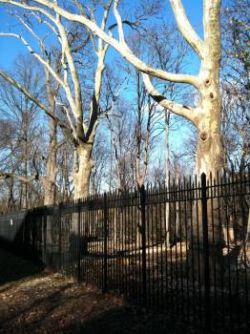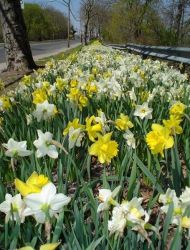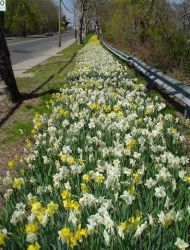Snug Harbor Cultural Center
The Daily Plant : Monday, January 3, 2011
Bank Of America Partnership Funds Three Urban Forest Protection Projects

NYC Parks & Recreation serves as steward to more than 29,000 acres of land in New York City. Including forests, marshes and wetlands, as well as parks, beaches, and greenstreets, this land, preserved and maintained by the Parks Department, is New York’s environmental legacy. But some of our environmental assets –including one of the most valuable and loved, the City’s urban forest –face numerous threats. In the Bronx, over 170 elm trees have been lost to Dutch Elm Disease since 2005. In Queens, the population of Great Historic Trees has been greatly reduced due to storm damage and urban development. And in Staten Island, invasive exotic plants are over-running native flora.
Conservation and stewardship of our urban forest, through MillionTreesNYC, is a critical component of Mayor Bloomberg’s PlaNYC program to make our city more sustainable by 2030. The goal of MillionTreesNYC is to plant and care for one million new trees by 2017, representing a 20% increase in the city’s total tree population. Trees play a pivotal role in the Mayor’s plan for a greener NYC because of the numerous benefits they provide: improvement of air quality, fortification of the condition of our water, deceleration of global climate change, reduction of summer air temperatures, conservation of our natural resources and protection of our wildlife habitats.
Thanks to PlaNYC, Parks’ role within the City – and within the lives of New Yorkers—has expanded dramatically. It is an exciting time to be in New York City, and it is thanks to our partnerships with organizations and corporations such as Bank of America that we are able to provide services and programs that improve the quality of life for New Yorkers and make our city more sustainable. Bank of America’s generous $60,000 grant this past year enabled Parks & Recreation to direct additional resources towards the reclamation, protection and preservation of trees in the Bronx, Queens, and Staten Island. The three important projects are outlined below.
Prevention of Dutch Elm Disease in the Bronx
Since 2005, 173 elm trees have been lost to Dutch Elm Disease (DED), a fungus spore carried on the back of Elm Bark Beetles. One third of Bank of America’s grant was allocated to prevent the loss of additional elm trees from this highly contagious disease, augmenting Mayor Bloomberg’s Dutch Elm Disease Program. Historically, the Parks Department has hired outside contractors to prune, inject, and remove trees affected by DED. This past year, upon further review, Bronx Forestry determined that it would be more cost effective to bring these functions in-house, and have Parks staff with the appropriate equipment perform these duties.
Toward this end, the Bank of America grant enabled Bronx Forestry to purchase a PiCUS Sonic Tomograph, a new precise measuring tool that detects and electronically measures the amount of decay in its various stages. With this tool, Parks is better able to determine future maintenance needs for the elm trees, as well as for other trees. Forestry also purchased 18 gallons of Arbotect 20-S fungicide with the remaining $6,000 to treat the elms directly. As a result, DED lost just four elm trees this past year—down from 12 in 2009.
Restoration of Great Historic Trees in Queens
In various Queens neighborhoods, a number of Great Historic Trees, such as elms, oaks and chestnuts, have been lost over time due to storm damage, natural decline and urban development. Queens Forestry utilized their portion of the Bank of America grant to restore some of these historic trees to New York’s ecosystem. The ultimate goal of the Parks Department is to bring these great trees back to their original proportion of the city’s urban forest. Queens Forestry directed the planting of eleven trees (three Contorted Filberts, three Yulan magnolias, two Sourwoods, and three Peking Lilacs) in Kissena Park. Parks will maintain and care the new Great Trees.
Restoration of the Native Forest in Snug Harbor, Staten Island
Also thanks to the Bank of America grant, NYC Parks worked with the Snug Harbor Cultural Center this fall to implement a small part of the Master Plan for Snug Harbor. The project involved the pruning of the mature canopy trees along the street edge, selective clearing of invasive species which had grown up over time hiding the historic line of London Plane Trees, and enhancing the emergent native forest woodland. In Spring of 2011 the Natural Resources group will plant native tree saplings and understory throughout this area of the site as part of the overall forest restoration plan for the area.
“I have never taken any exercise except sleeping and resting.”
(1835 – 1910)
Check out your park's Vital Signs
Clean & Safe
Green & Resilient
Empowered & Engaged Users
Share your feedback or learn more about how this park is part of a
Vital Park System


